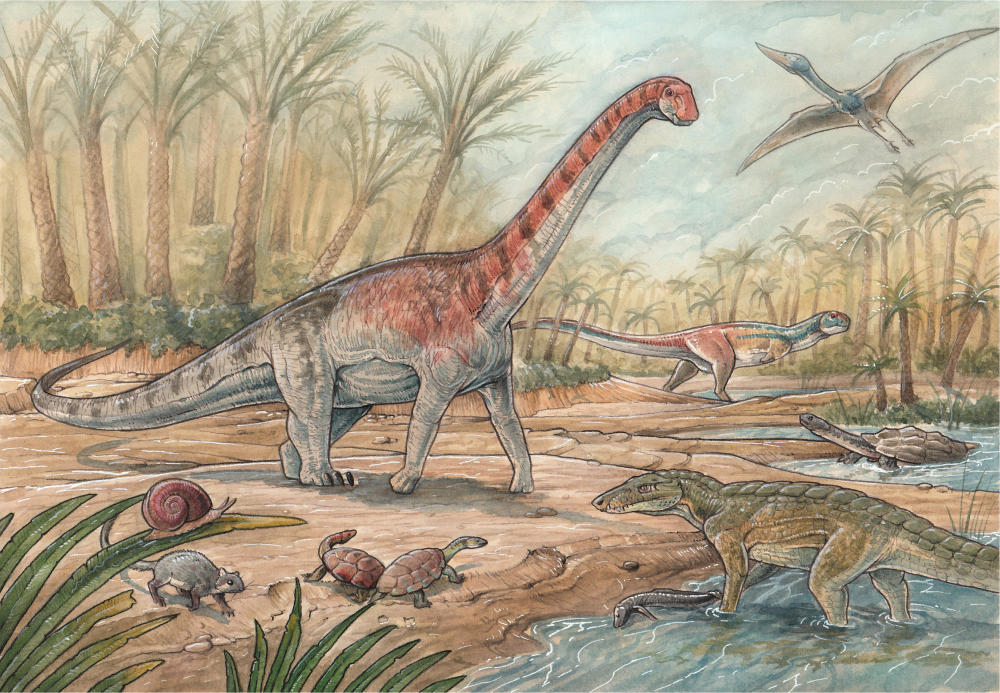A new-to-science species of titanosaur has been described by a team of palaeontologists working in the Anacleto Formation near northern Patagonia. The long-necked dinosaur has been named Chadititan calvoi, meaning “titan of the salt”.
ADVERTISEMENT
It may be salty by name, but Chadititan was not salty in nature, described as a “gentle giant” with a delicate build. It sits within the Rinconsaurian titanosaurs, a group already known for being smaller than most titanosaurs, but Chadititan was uniquely slender owing to its elongated vertebrate and delicate limb bones.
Its name is actually a hat tip to the salt flats where it was discovered, amidst a treasure trove of rare fossils that are helping the team to build a bigger picture of the ecosystem that Chadititan lived in. Those rare fossils include the first of a family of tropical land snails known as Neocyclotidae, as well as the first undisputed record for the tropical air-breathing land snail, Leptinaria.
“One of the most remarkable aspects of the discovered fauna is the overwhelming abundance of freshwater turtles, which make up more than 90% of the recovered fossils,” said study first author Federico Agnolin in a statement sent to IFLScience. “This high percentage is highly unusual, as in coeval sites from North America and Europe, turtles rarely account for more than 50% of the fauna.”
This rare collection of ancient animals was unearthed as part of a project on the end of the age of dinosaurs in Patagonia, which is funded by the National Geographic Society, with the support of more than 10 museums and universities in Argentina, including Museo de La Plata. It aims to fill in a gap in our knowledge about the last 15 million years of the Cretaceous Period, and the dinosaurs and vertebrates that lived in the region during that time.

“In addition to Chadititan, the fossils we identified of mollusks, fish, and turtles, enriches our understanding of this ancient ecosystem and expands our knowledge of life in Patagonia near the end of the dinosaur era.”
Image credit: Gabriel Lio / National Geographic
“In addition to Chadititan, the fossils we identified of mollusks, fish, and turtles, enriches our understanding of this ancient ecosystem and expands our knowledge of life in Patagonia near the end of the dinosaur era,” National Geographic Explorer Diego Pol said in the statement.
“Just by looking at the presence or absence of species in an area can suggest what makes the environment unique. In this case, the abundance of turtles and scarcity of crocodiles compared to regions in Europe and North America during the same period further highlights how Patagonian ecosystems were distinct as the continents drifted apart during the Cretaceous.”
ADVERTISEMENT
The team’s work has already retrieved one of the smallest titanosaurs ever discovered: Titanomachya gimenezi.
The study is published in the Revista del Museo Argentino Ciencias Naturales.
Source Link: New “Gentle Giant” Titanosaur Species Found In Rare 78-Million-Year-Old Fossil Trove